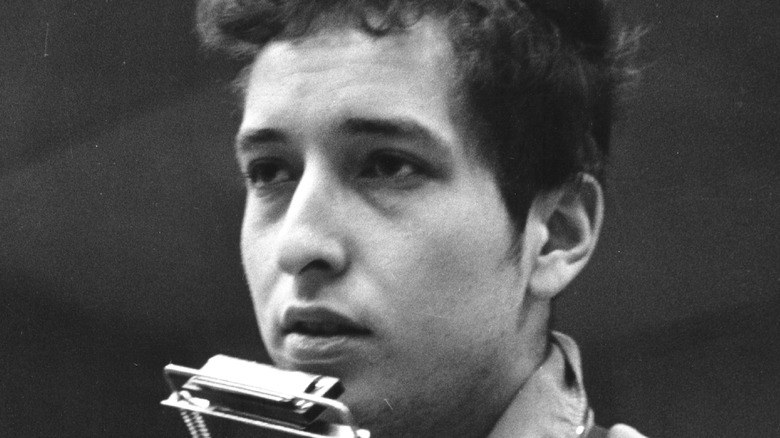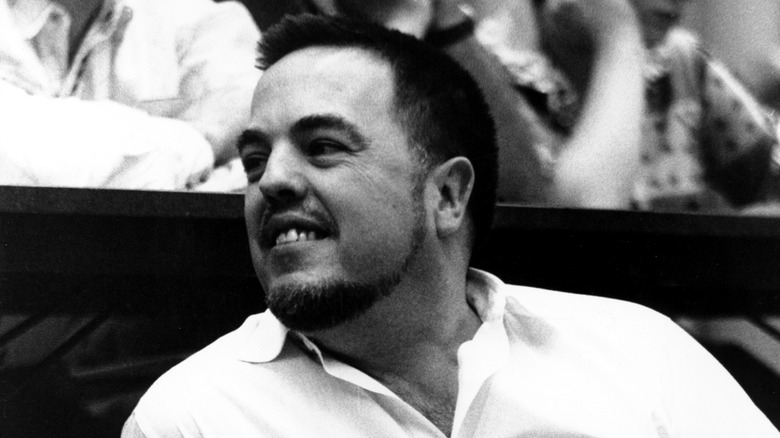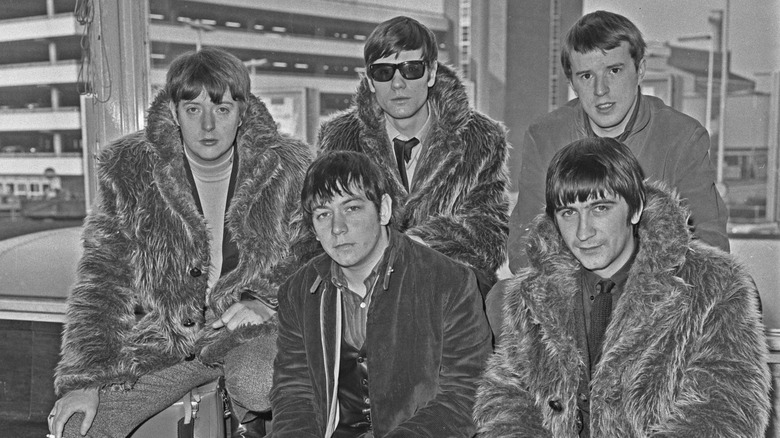Here's What We Think The House Of The Rising Sun By Bob Dylan Means
After The Beatles opened up the door for British acts to find success in the United States, one of the first bands to follow the Fab Four was a London-based group called The Animals. In September 1964, only seven months after The Beatles appeared on "The Ed Sullivan Show," The Animals topped their Liverpool counterparts by scoring a No. 1 hit in the U.S. (per Songfacts). While The Beatles' songs were more friendly pop tunes, The Animals topped the chart with a dark, blues-rock cover of a well-known traditional American folk and blues song, "House of the Rising Sun."
The song's legacy was not just that of a standard hit single. "House of the Rising Sun" appeared on Rolling Stone's list of the "500 Greatest Songs of All-Time" in 2003. The song also shaped the future of music. Bob Dylan recorded his own folk version in 1962 but later, after listening to The Animals' version, it inspired him to use electric instruments in his songs, forever changing the sound of rock music.
With such a legacy that still continues to grow to this day, one question has remained for the famous song: what is the House of the Rising Sun? It is neither a simple answer nor just one answer, as many people have posited theories about the subject of the song.
The Origins of The House of the Rising Sun
The earliest written version of "The House of the Rising Sun" was in 1925, though the song was known as "Rising Sun" (per Polyphonic on YouTube). However, this was not the song's origin. The song is believed to have formed around the Appalachian area long before radio and it was performed by insular music communities and traveling performers, who would change lyrics and the arrangement as they saw fit. Because of this, the author of the song is lost to history.
The 1925 written version was performed from the perspective of a woman, while the oldest recorded version by Clarence "Tom" Ashley in 1933, is sung from a man's perspective. Ashley said he learned the song from his grandparents and said the song was "too old to talk about." Music historians theorize that the song's origins go as far back as the 16th century as a part of an archetype in English ballads. Musicologist Alan Lomax (pictured above) found a song from 1613, "Maddie Groves," very similar to "House of the Rising Sun."
Lomax is famous for recording folk and blues songs for the Library of Congress and in 1937, recorded a version of the Rising Sun featuring Georgia Turner. Per Polyphonic (via YouTube), her version tells of a woman returning to New Orleans after leaving her drunken man. In the 1860s, New Orleans had a restaurant and bar called "The Rising Sun." Still, Lomax or Turner did not credit the place as the origins.
Other Theories of the Song and The Animals' Version
By the early 1960s, the song had been covered numerous times by some of the biggest names in music throughout the decades, including Nina Simone, Lead Belly, and Woody Guthrie (via Songfacts). While the theory of the song being about a pub or bar does have credibility, that is just one of many theories of the song's meaning. According to Polyphonic (via YouTube), Folk singer Dave Van Ronk, who covered the song in 1964 (though he is credited for inspiring Bob Dylan to record his own version a couple of years prior) theorized the song was about a women's prison. He said he saw a rising sun carving on the doorway of the Orleans Parish Women's Prison. Another popular theory is that the song is about a 19th-century brothel in New Orleans.
Dylan's version became popular in England's music scene and that same year, the British rock band, The Animals, put their own spin on the song by using electric instruments. According to Polyphonic (via YouTube), in May 1964, the group was opening for rock legend Chuck Berry who was touring England. One night, the group took the stage and performed the song for the first time. It immediately became a crowd favorite and nine days later, the band entered the studio to record the song for the singles chart. The song launched the band to the top of the rock charts and cemented the song's legacy.


